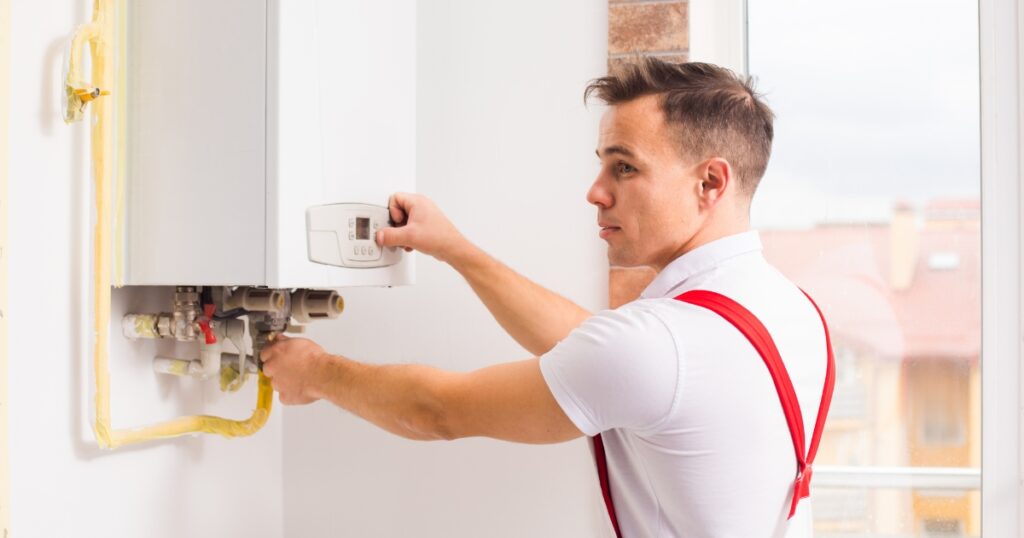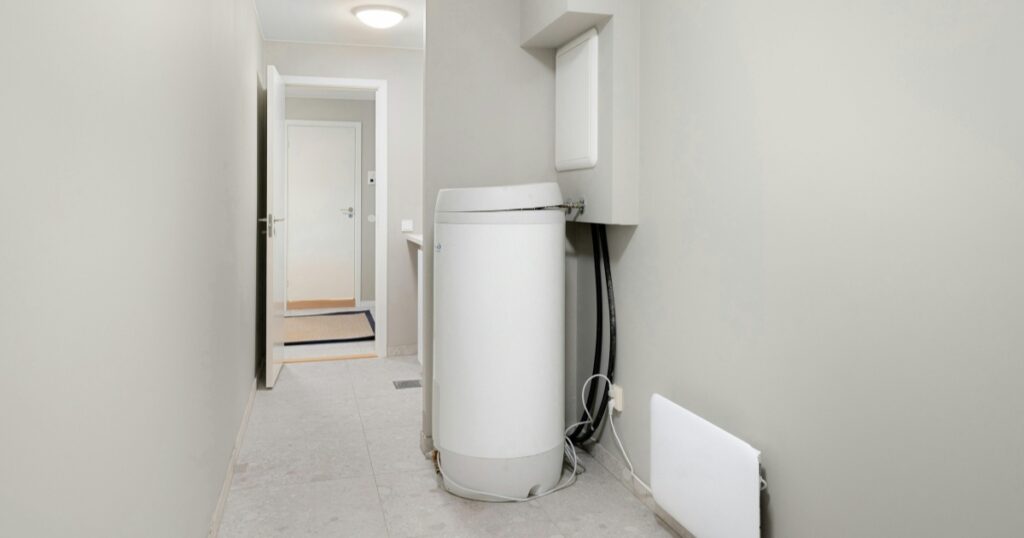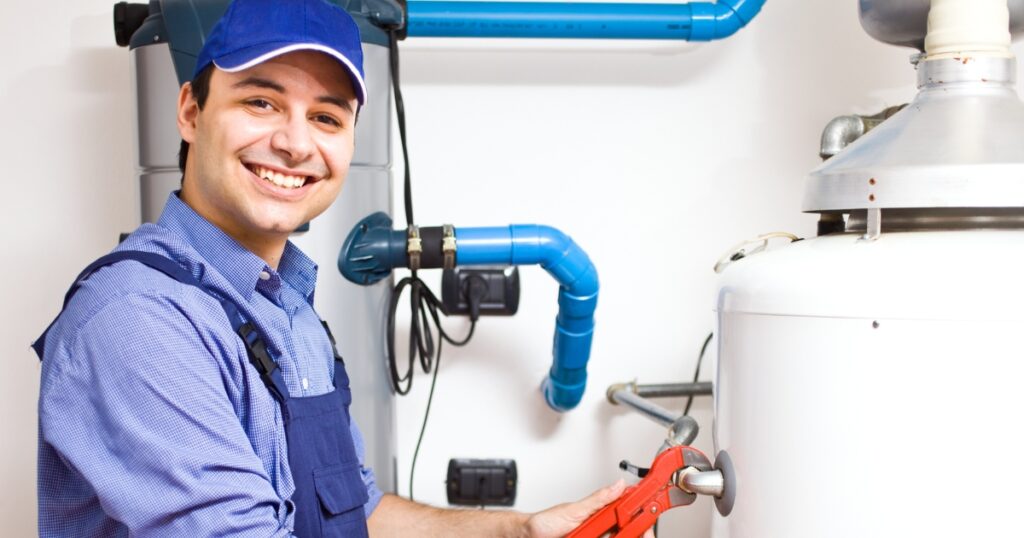Struggling with your hot water system and scratching your head over the cause? You’re in good company; it’s a pickle we’ve found ourselves in more times than we’d like to admit. Turns out, thermal expansion is often the sneaky troublemaker.
After rolling up our sleeves and digging deep, we’re here to walk you through spotting and sorting out thermal expansion woes in your hot water system. So, stick around for some handy tips that might just save your day!
Key Takeaways
- Regularly check and maintain your hot water system to prevent issues caused by thermal expansion. This includes inspecting expansion joints, testing relief valves, and monitoring water pressure.
- Install a thermal expansion tank and relief valves in your hot water system. These devices ease the pressure caused by heated water expanding, reducing the risk of leaks or damage.
- If unusual noises, insufficient hot water supply, or visible leaks occur in your hot water tank, act quickly to diagnose and fix these problems. Ignoring them could lead to more severe damage.
- Ensure that any air blockages within the system are promptly addressed. Bleed air from pipes as needed and checked for the proper functioning of air vents or automatic release valves.
- Regular recharging of your expansion tank might be necessary if you notice issues like excessive condensation on the tank or changes in system performance. This helps maintain appropriate pressure levels and prevents potential failures.
Understanding Thermal Expansion in Hot Water Systems
Understanding thermal expansion is crucial for homeowners. It involves the natural increase in the volume and pressure of water when heated. This expansion can lead to various problems in hot water systems, such as insufficient hot water, leaks in tanks, and unusual noises.
What is thermal expansion?
Thermal expansion refers to the way materials expand when they’re heated up. In our hot water systems, this principle means pipes and tanks get larger as the water inside them heats up.

This expansion and contraction is a natural part of how hot water systems operate, but without proper management, it can lead to serious issues.
We use expansion joints in our plumbing to allow for this growth caused by heat. These components are essential in preventing strain on our pipes and avoiding potential leaks or damage.
Without these joints, thermal growth could cause snaking pipes or even burst them under stress. Moving onto why thermal expansion happens in hot water systems will give us more insights into addressing these challenges effectively.
Causes of thermal expansion in hot water systems
Expansion in hot water systems occurs due to the heat from the water as it flows through the pipes, causing them to expand. Moreover, when the temperature of the water increases, it requires more space to accommodate this expansion.
This process leads to an increase in pressure within the system.
Additionally, water is unique because it expands as it becomes warmer and contracts as it cools down. Consequently, when there are restrictions or limitations preventing this natural process – such as closed-off valves or fixtures – pressure builds up and can cause damage to your hot water system.
Common Problems Resulting from Thermal Expansion
Thermal expansion in hot water systems can lead to common problems such as insufficient hot water and leaks in the hot water tanks. Unusual noises may also occur, indicating potential thermal expansion issues that require attention.
Insufficient hot water
When a hot water system fails to produce enough hot water for your household needs, it can be frustrating and inconvenient. This issue can often be attributed to thermal expansion in the hot water pipes, leading to reduced capacity and insufficient heating.
Addressing this problem with proper maintenance and installation of expansion joints or tanks can help mitigate thermal expansion issues, ensuring an adequate supply of hot water for daily use.
To prevent insufficient hot water due to thermal expansion, regular inspection and maintenance of the hot water system are essential. Adequate provision for expansion and contraction through the installation of expansion joints or tanks is crucial in maintaining the efficiency of your hot water system.
Leaks in hot water tanks
When hot water tanks develop leaks, it’s crucial to act promptly. Leaks can result in water damage and a disruption of your hot water supply. Look for any visible signs of leaking around the tank, such as puddles or dampness.
Additionally, keep an eye out for any unusual fluctuations in your hot water pressure or temperature, as these could indicate a leak. Remember that addressing leaks early can prevent more extensive issues down the line.
If you suspect a leak, contact a professional plumber to assess and repair the problem promptly. Ignoring leaks in your hot water tank can lead to further damage and increased repair costs down the track.
Unusual noises
Leakages in the hot water system can cause unusual noises, such as banging, hissing, or gurgling sounds. These sounds occur due to thermal expansion and contraction of pipes and components within the hot water system.
Typically, these noises signal an excessive buildup of pressure from trapped air or overheating that needs to be addressed promptly.
When these unusual noises persist in your hot water system, it is crucial to act quickly to prevent potential damage. Ignoring these sounds may result in leaks, bursts, or other costly issues with your hot water service.
To address this problem effectively:
– Regularly inspect the expansion joint and surrounding pipes for any signs of wear or damage.

Preventing Hot Water Service Expansion Joint Problems
Regular maintenance and inspection help in preventing hot water service expansion joint problems. The use of thermal expansion tanks and the installation of relief valves are effective preventive measures.
Regular maintenance and inspection
Ensuring regular maintenance and inspection of your hot water system is critical for preventing potential expansion joint problems. Here are essential steps to take:
- Conduct routine visual inspections to check for signs of leaks, unusual noises, or any visible damage to the expansion joints.
- Test the relief valves periodically to ensure they are functioning correctly and relieving pressure as needed.
- Monitor the water pressure in the system to identify any fluctuations that could indicate issues with thermal expansion.
- Schedule professional maintenance at least once a year by a qualified plumber to assess the condition of your hot water system and address any potential problems promptly.
- Keep records of all maintenance and inspections for future reference and comparison, helping you track any changes or trends in your system’s performance over time.
- Consider consulting with a plumbing professional if you notice any concerning changes in your hot water system’s behaviour, such as decreased efficiency or persistent issues.
By adhering to these maintenance and inspection practices, you can proactively identify and address potential expansion joint problems before they escalate, ensuring the continued reliability and performance of your hot water system.
Use of thermal expansion tanks
When addressing thermal expansion in hot water systems, it is crucial to consider the use of thermal expansion tanks. These tanks help to alleviate excessive pressure and prevent leaks and damage by allowing water to expand and contract without causing strain on the system.
By installing a thermal expansion tank, you can effectively manage the potential issues associated with thermal expansion in your hot water system, ensuring efficient and safe operation.
Through regular maintenance and inspection, homeowners can ensure that their hot water service expansion joint problems are mitigated. Installing relief valves alongside these tanks further aids in preventing any undesirable consequences resulting from thermal growth within the pipes of your hot water system.
Installation of relief valves
Transitioning from the importance of using thermal expansion tanks, another crucial aspect in preventing hot water service expansion joint problems is the installation of relief valves.
Relief valves are essential components that help regulate pressure and prevent over-pressurisation within the system. By installing relief valves, homeowners can ensure that excess pressure due to thermal expansion is safely released, preventing potential damage to the hot water system.
Relief valves play a critical role in maintaining a safe and efficient hot water system. When excess pressure builds up within the system due to thermal expansion, relief valves automatically open to release this pressure, safeguarding against potential leaks or damage.
Common Solutions for Thermal Expansion Issues
Inspect and maintain expansion tanks regularly. Consider consulting a professional for troubleshooting and addressing air blockages in the system. Recharging the tank, if needed, helps rectify thermal expansion problems.
Address condensation on the tank promptly to ensure efficient hot water service. Read more to understand effective solutions for thermal expansion issues in your hot water system!

Troubleshooting faulty expansion tanks
To troubleshoot faulty expansion tanks, we start by checking the tank pressure using a tyre gauge. This allows us to ensure that the pressure matches the manufacturer’s specifications. If the pressure is off, we can adjust it using the air valve on the tank, making sure not to over or under-pressurise. Additionally, we inspect for any leaks in the tank or its connections, addressing them promptly to prevent water damage and maintain proper function. Another crucial step is evaluating the condition of the diaphragm inside the tank, as a damaged diaphragm can lead to issues with thermal expansion regulation. We also examine if there is any waterlogging within the expansion tank, as this can impair its ability to address thermal expansion effectively. Finally, it’s important to verify that the expansion tank size aligns with the hot water system’s capacity and power requirements to ensure optimal performance and longevity.
In summary:
- Check and adjust tank pressure
- Inspect for leaks and address them promptly
- Evaluate diaphragm condition
- Verify the absence of waterlogging
- Ensure appropriate size for system capacity
Dealing with air blockages
Air blockages in your hot water system can lead to reduced efficiency and potential damage. Here are ways to address air blockages:
- Bleed the air from the hot water pipes by opening the highest and farthest faucet from the water heater.
- Check for air leakages in the expansion tank, and ensure it is properly charged to maintain correct pressure levels.
- Inspect for loose fittings or improper seals that may be causing air to enter the system.
- Use an air vent or automatic air release valve to remove trapped air from the system.
Ensuring proper airflow in your hot water system is crucial for maintaining its efficiency and preventing potential damage to your system. Addressing air blockages promptly will help keep your hot water running smoothly.
Need for tank recharging
Dealing with air blockages can lead to a need for tank recharging due to the effects of air getting trapped in the hot water system. Recharging your expansion tank is essential to maintain proper pressure and prevent potential damage from occurring.
When an expansion tank loses its charge, it can compromise the system’s ability to absorb thermal expansion, resulting in increased pressure within the hot water system. This leads to issues such as leaks, safety valve discharge, or even complete failure of the hot water heater.
Maintaining optimal pressure through regular tank recharging is important in preventing these problems and ensuring that your hot water system operates efficiently and safely. Therefore, staying vigilant about the condition of your expansion tank and promptly recharging it when needed will help avoid costly repairs and potential hazards associated with a malfunctioning hot water system.
Condensation on the tank
Condensation on your hot water tank may indicate a larger issue. Excessive condensation could result from the temperature of the water in the tank being set too high. It may also indicate a faulty or damaged insulation layer within the tank, which can lead to energy wastage and increased utility bills.
If left unaddressed, condensation can cause corrosion and rusting of the tank’s exterior, leading to potential leaks and damage.
Addressing this issue promptly is crucial to prevent further damage and maintain your hot water system’s efficiency. Regularly checking for condensation and addressing any underlying issues will help you avoid costly repairs and ensure that your hot water system continues to operate effectively.
Swift Resolution for Your Hot Water Needs Today!
To prevent expansion joint problems in hot water systems, regular maintenance and inspection are essential. Using thermal expansion tanks and installing relief valves can help mitigate the impact of thermal expansion.
It is crucial to troubleshoot faulty expansion tanks and address any air blockages promptly. Maintaining a well-functioning hot water system by rectifying thermal expansion issues ensures uninterrupted supply and prevents potential damage.
Are expansion joint problems causing issues with your hot water service? Don’t let leaks or inefficiencies disrupt your hot water supply. Contact Hot Water Repairs Today for expert assistance in addressing expansion joint problems.
Our experienced technicians specialise in diagnosing and repairing expansion joint issues to ensure your hot water system operates efficiently and reliably. Whether it’s a minor repair or a complete replacement, we have the skills and expertise to get the job done right the first time.
Don’t wait until expansion joint problems escalate. Trust Hot Water Repairs Today to provide prompt and effective solutions to keep your hot water flowing smoothly. Contact us now to schedule a service appointment!






